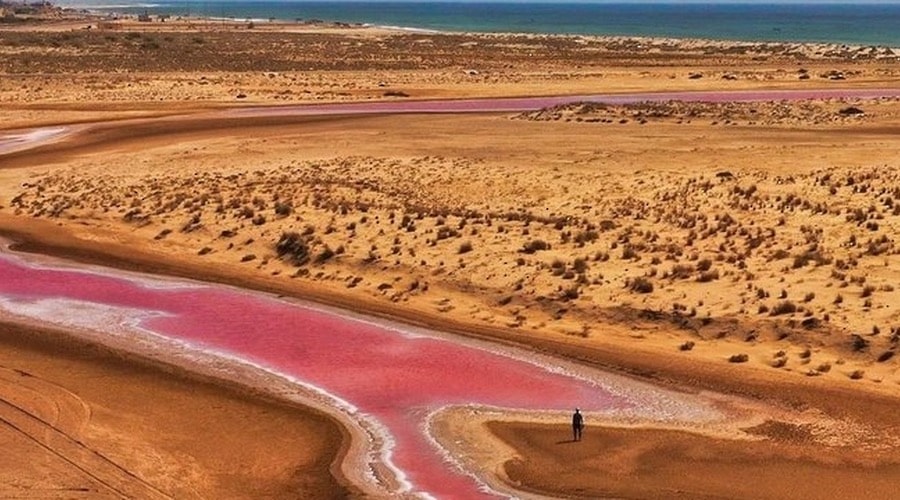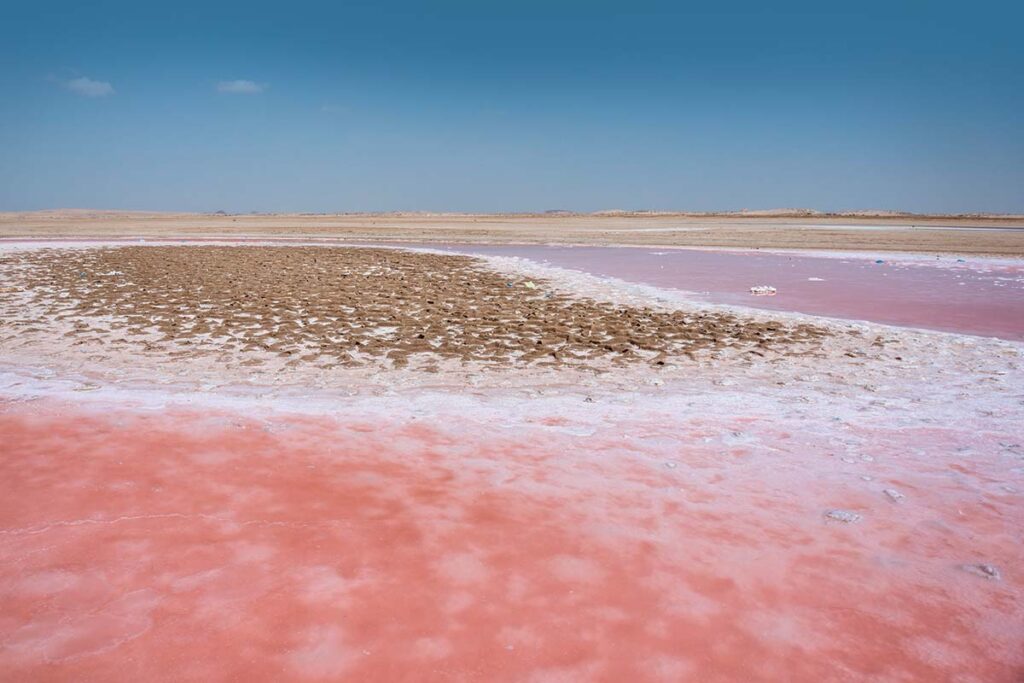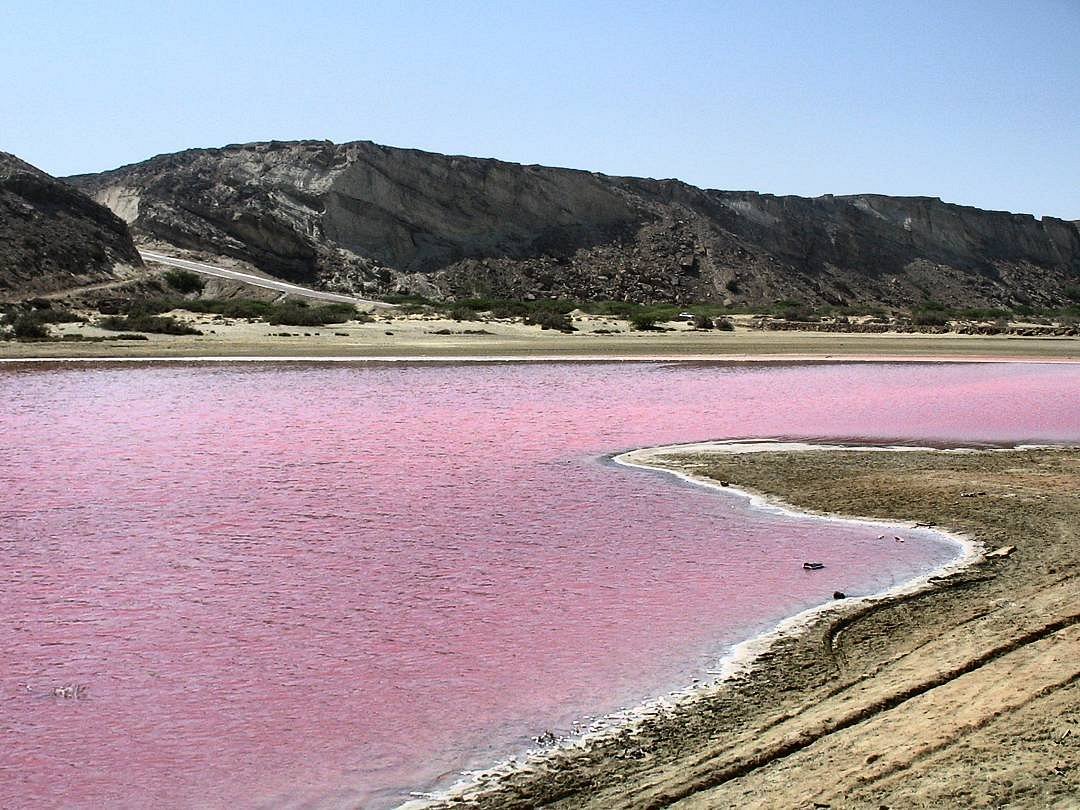Oman, a country known for its breathtaking landscapes, has recently caught the attention of nature lovers and travelers with a unique natural wonder—the Pink Lake. This mesmerizing lake, with its striking pink color, has become a hot topic among tourists and scientists alike. But what makes this lake so special? And why does it appear pink? Let’s dive into the mystery behind Oman’s Pink Lake.
Where is Oman’s Pink Lake?

Located in the coastal area of Al Suwaih in the Wilayat of Jalan Bani Bu Ali, South Al Sharqiyah Governorate, the Pink Lake is a rare sight in the region. It sits near the Arabian Sea, making it a must-visit destination for those who love nature’s surprises. The lake is not very large, but its vibrant pink hue makes it stand out against the golden sands and blue waters of the sea nearby.
Why is the Lake Pink?
One of the most intriguing questions about this lake is why it has a pink color. Scientists say that the color comes from a type of algae called Dunaliella salina, which thrives in salty water. When the algae are exposed to sunlight, they produce a red pigment, giving the water its pinkish hue. The presence of high salt levels in the lake also helps the algae grow, enhancing the intensity of the color.
Similar pink lakes can be found in other parts of the world, such as Lake Hillier in Australia and Lake Retba in Senegal. However, Oman’s Pink Lake is still a rare phenomenon in the Middle East, making it a truly unique attraction.
A Viral Sensation on Social Media
Ever since photos of Oman’s Pink Lake started circulating on social media, it has become a viral sensation. Travelers, photographers, and influencers have flocked to the site to capture its beauty. Many visitors describe the experience as magical, as the lake looks almost unreal against its natural surroundings.
Social media platforms like Instagram and TikTok are flooded with stunning pictures and videos of the lake, drawing even more attention from people around the world. Some visitors even compare it to something out of a fairytale.
Is the Pink Color Permanent?
While the lake’s pink color is breathtaking, it is not always the same shade throughout the year. The intensity of the color changes depending on factors like the amount of sunlight, salt concentration, and algae growth. During some seasons, the pink hue is more vibrant, while at other times, it may fade slightly.
Scientists say that the lake’s color is natural and not caused by pollution or artificial substances. However, since it is a delicate ecosystem, visitors are advised to respect the area and avoid polluting the water.
How to Visit Oman’s Pink Lake?

If you’re planning to see Oman’s Pink Lake for yourself, here are a few things to keep in mind:
- Best Time to Visit: The lake is most vibrant during sunny days, so visiting in the morning or early afternoon is ideal.
- Getting There: The lake is located in Al Suwaih, which is about a 3-4 hour drive from Muscat, Oman’s capital. A four-wheel-drive vehicle is recommended for the journey, as some roads may be rough.
- What to Bring: Sunscreen, water, and a camera to capture the stunning view! It’s also a good idea to wear comfortable clothing and shoes suitable for walking on sand.
Preserving the Beauty of the Lake
As more people visit the Pink Lake, it is crucial to ensure that it remains protected. Authorities and environmentalists have emphasized the importance of keeping the area clean and preserving its natural beauty. Visitors are urged not to throw trash, disturb the water, or harm the algae that make the lake so unique.
Since the lake is still being studied, scientists hope to learn more about its ecosystem and how it can be protected for future generations.
Final Thoughts
Oman’s Pink Lake is a true natural wonder that has captivated people from all over the world. Its rare beauty, combined with the mystery of its pink hue, makes it a must-see destination for travelers and nature enthusiasts. Whether you’re looking for a unique adventure, an Instagram-worthy spot, or simply a peaceful escape, the Pink Lake is worth the visit.
Do follow on Instagram
Egypt’s $110 Billion Megacity: A New Rival to Saudi Arabia’s NEOM?



